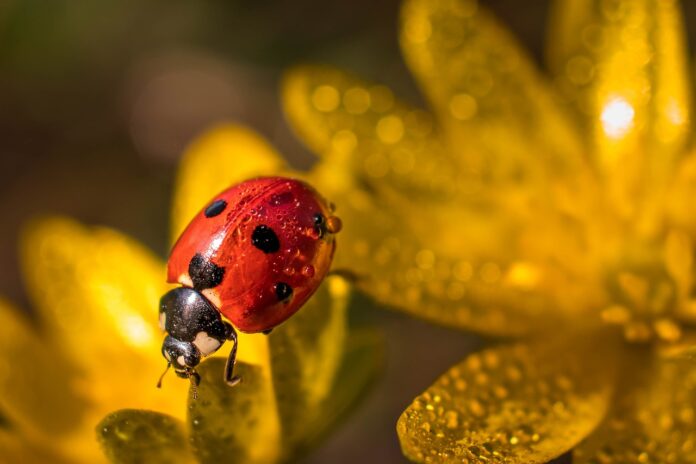Ladybugs, also known as ladybirds or lady beetles, are beloved insects recognized for their bright colors and distinctive spots. Beyond their charming appearance, these tiny creatures have some fascinating traits and behaviors.
Facts About Ladybugs:
- Global Presence: There are over 5,000 species of ladybugs found around the world, inhabiting various climates and regions.
- Beneficial Insects: Ladybugs are natural predators of garden pests, particularly aphids, making them beneficial for gardeners and farmers.
- Colorful Warning: The bright red or orange color of many ladybugs serves as a warning to predators that they are toxic or distasteful.
- Chemical Defense: When threatened, ladybugs secrete a yellowish fluid from their leg joints that has a foul smell and taste, deterring predators.
- Polka-Dotted Patterns: While the classic red with black spots is the most recognized pattern, ladybugs can come in various colors, including yellow, orange, and black, with different spot patterns.
- Symbol of Good Luck: In many cultures, ladybugs are considered symbols of good luck and are believed to bring prosperity and protection.
- Diapause Behavior: Ladybugs can enter a state of diapause, similar to hibernation, during the winter months, allowing them to survive cold weather with minimal energy use.
- Lifespan: A ladybug’s lifespan can range from a few months to over a year, depending on environmental conditions and species.
- Aphid Eaters: An adult ladybug can eat up to 50 aphids a day, and their larvae are even more voracious, consuming hundreds of aphids in their development.
- Winged Flight: Ladybugs have two pairs of wings, with the hard outer wings (elytra) protecting the delicate flight wings underneath.
- Lifecycle Stages: Ladybugs undergo complete metamorphosis with four stages: egg, larva, pupa, and adult.
- Social Gathering: Ladybugs are known to gather in large groups to overwinter, often in the same location year after year.
- Ladybug Larvae: Ladybug larvae look very different from adults, resembling tiny alligators with long, segmented bodies and spiny exteriors.
- Cultural Names: The name “ladybug” is derived from “Our Lady,” a reference to the Virgin Mary in European tradition, where these insects were associated with good harvests.
- Predators: Despite their defenses, ladybugs have predators, including birds, frogs, and spiders, though many avoid them due to their toxic properties.
- Defensive Reflex: When disturbed, ladybugs often “play dead” by folding up their legs and becoming motionless.
- Varied Diet: While aphids are their preferred food, ladybugs also eat mites, scales, and other small insects. Some species even consume pollen and nectar.
- Ladybug Invasions: Certain species, like the Asian lady beetle, can become invasive, entering homes in large numbers during the colder months.
- Environmental Indicators: The presence of ladybugs is often a sign of a healthy ecosystem, as they help control pest populations naturally.
- Color Variation: Some species of ladybugs can change color slightly depending on temperature and diet, with colder weather often resulting in darker spots or more intense colors.
- Mating Behavior: Ladybugs typically mate in the spring, and a single female can lay up to 1,000 eggs in her lifetime.
- Mimicry: Some insects mimic the appearance of ladybugs to deter predators, taking advantage of their toxic reputation.
- Ladybug Spots: The number of spots on a ladybug’s back does not indicate its age, contrary to popular belief, but rather its species.
- Protective Armor: The elytra not only protect the ladybug’s wings but also help conserve moisture, allowing the insect to survive in dry conditions.
- Pollinators: While not as efficient as bees, some ladybug species do assist in pollination when they feed on nectar and pollen.
